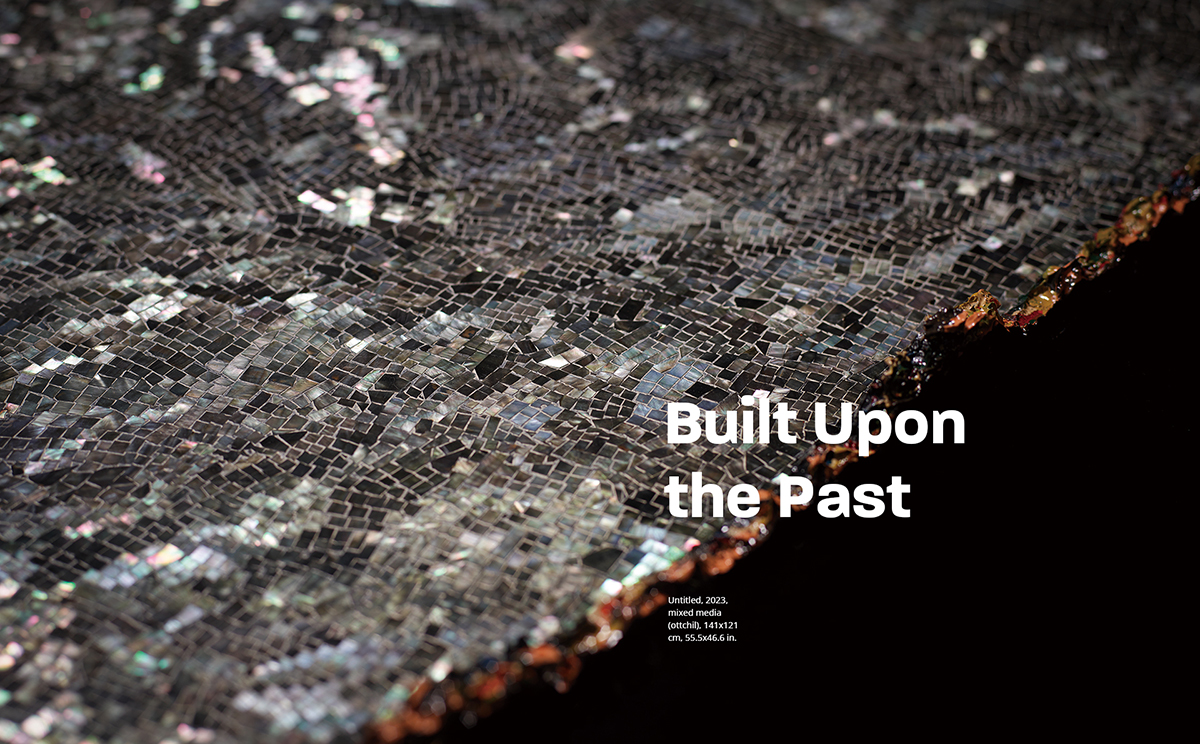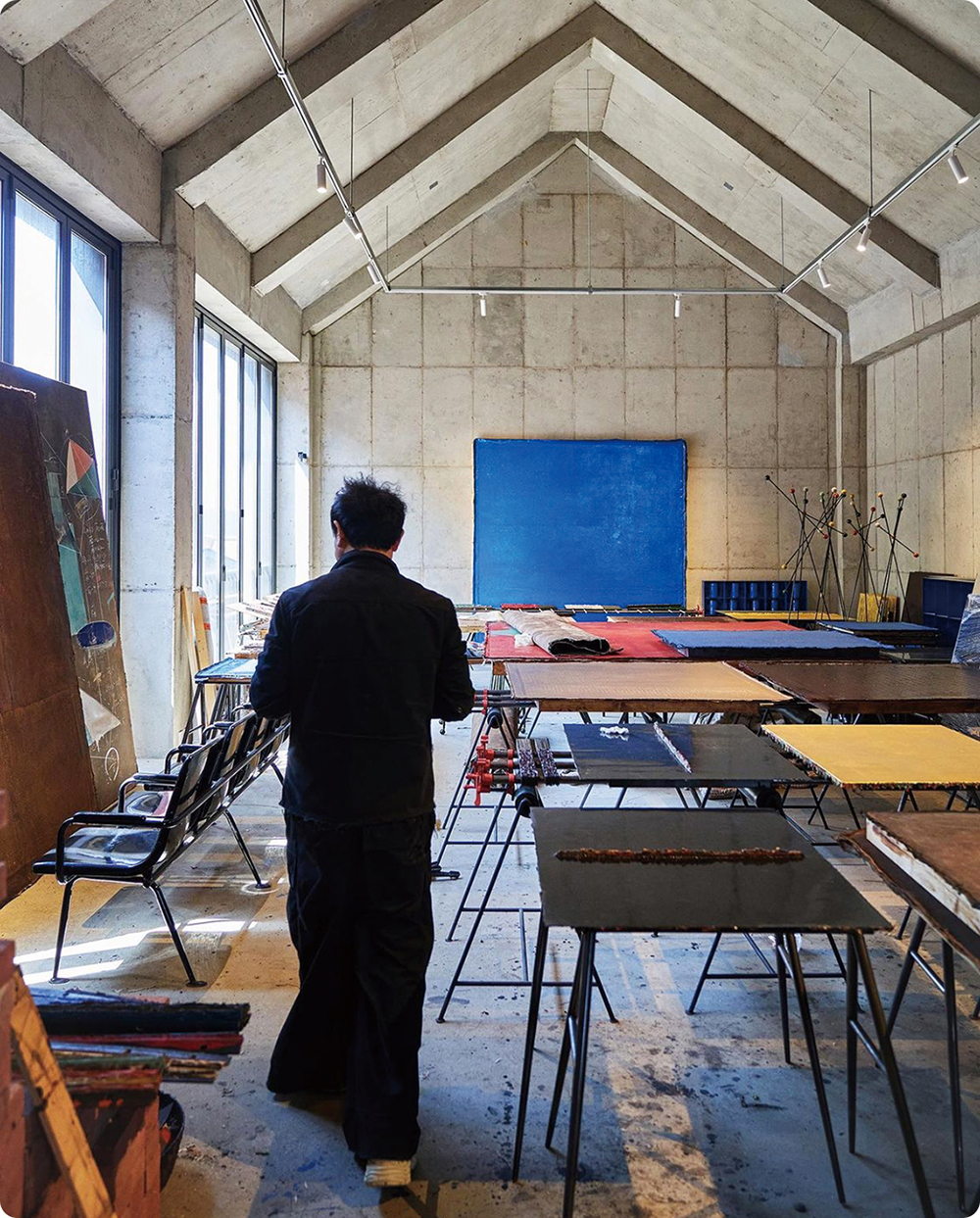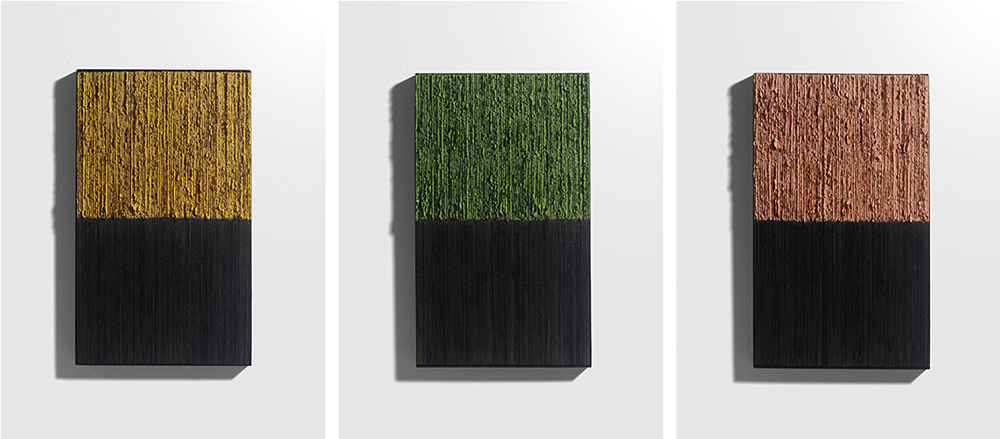
Art+Future
- Writer.Sung Ji Yeon
- Photos courtesy of.Huh Myoung Wook
All of us are trapped in the flow of time. Like it or not, we are swept toward the future. Sometimes so absorbed in the present we completely forget about the past. Huh Myoung Wook takes aim at that mindset in his artwork. For Huh, the past survives inside us in the form of traces of time. He works with ottchil (traditional lacquer), which changes color over time, to express the accumulation of time and the value derived from it. His works say to us, “Nothing we do is by chance because the people we are today are built from those accumulated moments.” So a face-to-face encounter with Huh’s work can be eye-opening, forcing us to realize that our dreams about tomorrow are built by laying each day on the one that came before.
Huh Myoung Wook
Q. I heard that you make a record of your feelings each day.
Every day, I express the feelings I have through painting with ottchil. The colors are never repeated because I don’t record the blending ratio. After mixing the colors, I express my thoughts and feelings in various media.
Q. Can you tell me more about your daily color series?
I might be best-known for my stick series. I colored a strip of birch and then recorded when I made that color. I applied six or more colors to each stick, with each stick taking eight to ten days to complete. Then I gathered all those sticks together and used them to make a piece with the overlaid colors all visible at once. The bottom half of the piece is covered in black, which is what results from combining all the colors, of course. In the same way, a close look at my work reveals an immense amount of time accumulated beneath the black.”
There’s also a fabric series where I wrapped fabric around metal plates of my own creation. The work on a single sheet of fabric had to be repeated ten times. I applied ottchil and glue and let it dry, applied more ottchil and let it dry, and then filled the gaps with tohoe (clay ash) and let it dry before sanding down the surface. I had to do the lacquering and sanding process multiple times.
Q. It sounds like your work is time-consuming and repetitive.
It’s a repetitive process of adding color, letting it dry, and sometimes sanding it down. Then the next day, I do it all over again. Someone once said it seems a shame I get rid of the colors I make each day. But those colors don’t actually go away, because their layers remain on the fabric. The artwork I make in this way is a bundle of time—the materialization of past moments. So what I want people to focus on is not what’s right before their eyes, but the repeated actions and attitude, and the feelings and significance they contain.

Q. It sounds like you’re enchanted with time and its characteristics.
I began to appreciate the power of time when I was seven or eight years old. I remember putting on some new house shoes stained with mud. I remember wearing new jeans ripped on a boulder. I perceived the beauty of wallpaper torn to reveal the layers beneath. New things felt awkward to me, while time-worn things looked attractive. Thinking over it now, I realized that I only liked things that were shaped by time.
Q. Is there a reason you mainly use ottchil?
It’s because ottchil possesses the characteristic of temporality. ottchil doesn’t take on the color you want right away. The color comes with time, which many ottchil artists see as a downside. But since I’m always looking to materialize time, the fact that ottchil changes color over time was very attractive. Ottchil makes it possible to express temporality itself.
Q. Why do you change the materials of your work aside from ottchil?
Materials have their own qualities. Some are sensitive to temperature and humidity, while others are reactive to shock. That’s why I’ve studied materials so much. I also consider whether the message being expressed corresponds to the materials being used. After collecting the answers to my various questions, I adopt different materials and forms in my subsequent series.
Take ottchil as an example. Ottchil is sensitive both temperature and humidity. I’ve worked with ottchil on a canvas before. But a canvas responds to temperature and humidity by repeatedly expanding and contracting, which fractures the ottchil.
The workaround I came up with is metal sheets, which are denser and don’t expand or contract. The problem here is that they reject the ottchil. So after lacquering the metal sheet, I fire it in a kiln at 200 degrees, which forces the ottchil to adhere to the sheet. Several rounds of applying and firing ottchil form layers, and after a certain point, I can work with the ottchil without firing it. This illustrates how I’m constantly thinking about materials. My work is always changing because when one approach doesn’t work, I have to find a way to compensate for that.

Untitled, 2023, ottchil on birch, 66x144 cm, 24.8x56.7 in
Q. What’s the source of your inspiration and energy?
I think of life itself as being a work of art. Breath, movement and thought—these are all part of my work. What that means is that everything brings me inspiration. Some people ask whether my work is exhausting, but it’s not. I love my work so much; not long ago, in fact, I had so many ideas for a new project I couldn’t get to sleep. My mind was just bubbling over with all the various things I wanted to try. You can’t feel fatigue or pain under those conditions.
Q. How would you like your artwork to affect viewers?
While I said I mix a new color every day, I’m human like the rest of us, and I’m not always in a good mood. So on my bad mood days, I don’t mix a color. The result is that the artwork people see is a bundle of good feelings. I want my artwork to bring people positive energy.
Q. What are your plans?
My current project is lacquering half of a big canvass with the “color of the day” and letting nature do the other half. I think it will be ready to unveil, along with the video, next year.
I’m thinking about opening an art museum on Jeju Island. In fact, my dream is to not sell artwork. Given the amount of time that goes into each piece, I can’t produce artwork very quickly, which ultimately means I have a limited artistic output. So if my artwork—these bundles of good feelings—are to reach the greatest number of people, I guess I’ll have to keep them at a museum.





